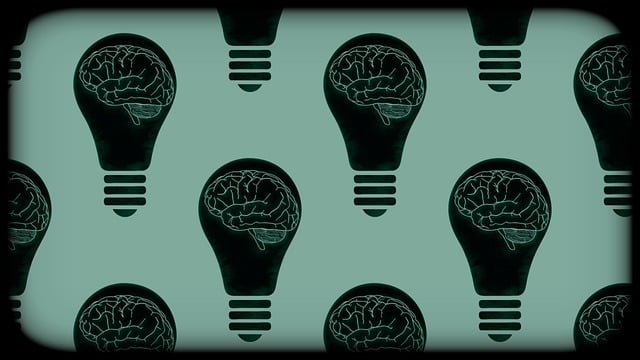Understanding mental illness representation in media is critical for combating stereotypes and promoting awareness. Media has significant influence over public perception, making accurate portrayal essential. Techniques like Parker Exposure and Response Prevention Therapy (PERP) offer evidence-based narratives that challenge simplistic stereotypes. PERP combines exposure therapy with response prevention, helping individuals gradually face fears and build resilience. Accurate media representation, through practices like PERP, can foster empathy, reduce stigma, and inspire positive change for mental health.
Mental illness representation in media is a complex issue, often reflecting societal biases while shaping public perceptions. This article delves into the challenges and offers solutions, focusing on the innovative Parker Exposure and Response Prevention Therapy (PERP). We explore accurate depictions of mental health struggles, addressing barriers like stigmatization and stereotyping. By implementing strategic guidelines, media can enhance portrayal, fostering understanding and empathy through compelling narratives centered around real-life experiences. PERP emerges as a game-changer in treatment representation, inspiring positive change.
- Understanding Mental Illness Representation in Media
- Parker Exposure and Response Prevention Therapy: An Innovative Approach
- Challenges and Barriers to Accurate Depictions
- Strategies for Enhancing Media Portrayal of Mental Health
Understanding Mental Illness Representation in Media

Understanding mental illness representation in media is a crucial step towards challenging stereotypes and promoting accurate awareness. The media plays a significant role in shaping public perception, and its portrayal of mental health can either perpetuate harmful myths or educate and empathize with audiences. It’s essential to recognize that mental illnesses are complex and diverse, each with unique symptoms and experiences. Therefore, media representation should reflect this complexity, offering nuanced narratives that go beyond simplistic stereotypes. For instance, the rise of awareness campaigns like Parker Exposure and Response Prevention Therapy (E/RPT) highlights a shift towards more accurate and empathetic storytelling.
E/RPT, as a therapeutic approach, encourages individuals to confront and manage their fears through gradual exposure, thereby preventing burnout and promoting resilience. This strategy mirrors the importance of addressing mental health issues proactively in media. By incorporating such evidence-based practices into narratives, the media can contribute to a healthier understanding of mental illness. Moreover, it emphasizes the need for effective communication strategies among mental health professionals, as seen in risk assessment models designed to safeguard both clients and practitioners. This holistic approach ensures that media representation not only educates but also inspires positive change.
Parker Exposure and Response Prevention Therapy: An Innovative Approach

Parker Exposure and Response Prevention Therapy (PERP) is an innovative approach that offers a unique perspective on treating mental illness in media representation. This therapy technique focuses on gradually exposing individuals to their fears or triggers while preventing them from engaging in habitual coping responses, such as avoidance behaviors. By doing so, PERP aims to help clients build confidence and enhance their mood management skills. Through a structured process, individuals learn to confront their anxieties head-on, replacing avoidance with adaptive strategies.
This method has proven effective for various mental health conditions, including anxiety disorders and obsessive-compulsive disorder (OCD). By combining exposure therapy with response prevention, PERP encourages clients to develop new, healthier coping mechanisms. It provides a practical framework for individuals to manage their symptoms, improve their overall mental wellness, and even offers guidance through journaling exercises to track progress and reflections. This innovative therapy approach has the potential to revolutionize how we address mental illness in media representations, promoting more accurate and empowering narratives.
Challenges and Barriers to Accurate Depictions

Mental illness representation in media faces several challenges and barriers to achieving accurate and nuanced portrayals. One significant hurdle is the tendency to rely on stereotypes, which often oversimplify complex conditions. This can lead to shallow characterizations that perpetuate misunderstandings and stigmatize individuals living with mental health issues. Additionally, media platforms frequently depict severe cases while omitting the subtler forms of distress, contributing to a distorted view of mental illness.
Another critical aspect is the impact of sensationalism on storytelling. Sensationalizing mental illness can be harmful, as it often focuses on dramatic and frightening aspects, neglecting the potential for recovery and resilience. Positive thinking and emotional well-being promotion techniques are essential in countering these negative trends. Implementing evidence-based practices like Parker Exposure and Response Prevention Therapy (EBRT) can aid in creating more realistic and helpful media representations that encourage empathy and support for individuals seeking mental health services. Effective risk management planning for mental health professionals is also crucial to ensure responsible media engagement.
Strategies for Enhancing Media Portrayal of Mental Health

Media portrayal plays a significant role in shaping public understanding of mental health issues. To enhance representation, creators can adopt evidence-based practices that promote accurate and nuanced storytelling. One such approach is Parker Exposure and Response Prevention Therapy (ERTP), which involves gradually exposing individuals to distressing situations while teaching them coping skills and challenging unhelpful responses. By incorporating these techniques into scripts and character development, media can accurately portray the experiences of those with mental health conditions, fostering empathy among viewers.
Additionally, focusing on characters’ journeys towards self-improvement and recovery, rather than solely highlighting their struggles, aligns with Mind Over Matter principles. This shift emphasizes the importance of coping skills development and confidence boosting as integral parts of the healing process. Such strategies not only provide a more balanced perspective but also offer valuable insights into the resilience and strength that individuals with mental health challenges possess.
Mental illness representation in media has come a long way, but challenges remain. By understanding the impact of portrayals and implementing innovative approaches like Parker Exposure and Response Prevention Therapy, we can foster more accurate and empathetic depictions. Overcoming barriers through strategic initiatives will enhance media’s role in promoting mental health awareness and reducing stigma. This collaborative effort is crucial to creating a more inclusive and supportive society for those living with mental illness.














